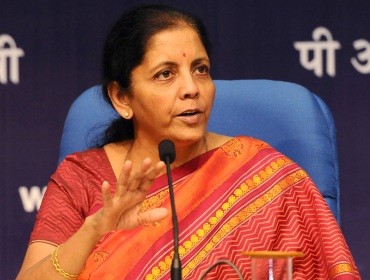
It was a trailblazer Friday, with Finance Minister Nirmala Sitharaman unleashing historic direct tax reforms last seen three decades ago.
By reducing optimal corporate tax to 22 per cent from 30 for existing firms and to 15 per cent for new manufacturers, Sitharaman has finally decided to engage the slowdown monster in a bare-knuckle fight.
If the Finance Minister's weekly relief measures until now were seen as crumbs thrown to show good faith, the latest move is considered the biggest incremental reform under Modi 2.0 and aligns India's rates with the lowest in the world. They are also on par with US' 21 per cent and UK's 19 per cent and will boost income, attract capital and investments, but whether companies use the surplus to reinvest or reduce debt or reward shareholders remains to be seen.
Regardless of what they do, consumption and demand are bound to rise, though the big bang save-the-economy pill comes in lieu of a painful tradeoff to forego a princely sum of Rs 1.45 lakh crore, or 1 per cent of the GDP.
Given direct tax collections until September 15 saw a molasses-like 5 per cent growth, miles away from the projected 18 per cent, it appears that the government's obsession of meeting the 3.3 per cent fiscal deficit target with decimal precision stands junked. As Sitharaman said, fiscal deficit may surge 0.70% to 4 per cent of the GDP in FY20, and could spook 'Chicken Little' rating agencies, who often extol thrift and discourage debt. But now it appears that the Finance Minister believes even perpetual deficits are sustainable, but first the economy should expand faster than the national debt.
"Corporate tax collections were weak, but it's only September and collections will pick up with today's announcement. For large companies, the reduction from 30 to 22 per cent translates to a significant cut. Even if there's a slight slippage in the fiscal deficit, given the global economic slowdown, it's not a major concern," said Vikas Vasal, Partner and National Leader - Tax, Grant Thornton India.
Hopefully, similar tax reduction for individuals will follow as it leaves money in the hands of taxpayers, and will in turn boost overall demand and consumption, he explained.
Worryingly, advance corporate tax collections - firms pay 40 per cent of advance taxes by September, 15 - was weaker than expected, confirming worst fears that this fiscal too, expenditure will outstrip revenue. Yet, Sitharaman indicated with certainty that a little deviation won't be ruinous and may be it was thrift - not spendthrift - that sleepwalked us into a slowdown.
"The downside to this tax reduction is clearly lower tax revenue, although hopefully the volume will eventually offset the decline of the rate. That said, you can see the winners of the announcement – growth (equities) - and losers – bonds (which tend to cheer for bearish markets to have rate cuts and risk aversion)," Trinh Nguyen, Asia Senior Economist, Natixis told Express.
For markets, the delicious Friday fix was akin to winning a free ticket on the Mars-bound Space X, with both Sensex and Nifty surging 1921.15 and 560.40 points respectively, registering the highest single-day gain in the last 10 years. Investors added over Rs 6.1 lakh crore wealth, though bond markets sulked. "The bond market did not take the fiscal announcement very well. FM was also unable to justify the fiscal concerns, thus the 10-year yield surged nearly 25 bps keeping rupee gains under check," said Rahul Gupta, Currency Research Head, Emkay Global Financial Services Ltd.
Perhaps, for the first time, the government is also offering companies a Do-It-Yourself tax policy. Firms can pay a higher tax rate and claim tax breaks or simply pay a lower rate sans incentives. The effective tax rate now stands at 25.17 per cent. New manufacturers setting shop starting October 1 and promising to start production before March 2023 will attract 15 per cent base rate or an effective tax rate of over 17 per cent - which is the same as in Singapore. "The tax cut, especially the targeted one for new manufacturing at 15 per cent signals its (government) commitment to attract investors looking to diversify out of China due to rising labour and land costs, fewer incentives and now tariffs," reasoned Nguyen.
According to her, no country can counter China's sheer size except India. "While Vietnam is competitive because of its location and package of policy support, India is in its own league. But it is not enough to rest on its laurels and that is why the Indian government needs to seize the moment and push through reforms to make it even easier to consider India as a long-term destination," she added.
Meanwhile, Minimum Alternate Tax (MAT) has been reduced to 15 per cent from 18.5 per cent for companies who continue to avail exemptions and incentives. Besides, surcharge introduced in the Budget on capital gains on sale of equity shares liable for Securities Transaction Tax stands withdrawn.
Misfortune, uncertainty and market volatility marked Sitharaman's first 100 days as Finance Minister, with growth decidedly going sideways than the projected 8 per cent. While Friday's decision certainly boosts sentiment, critics argue that areas like land, labour and agriculture marketing need chunks of wet meat to build size and scale.


.jpeg)

